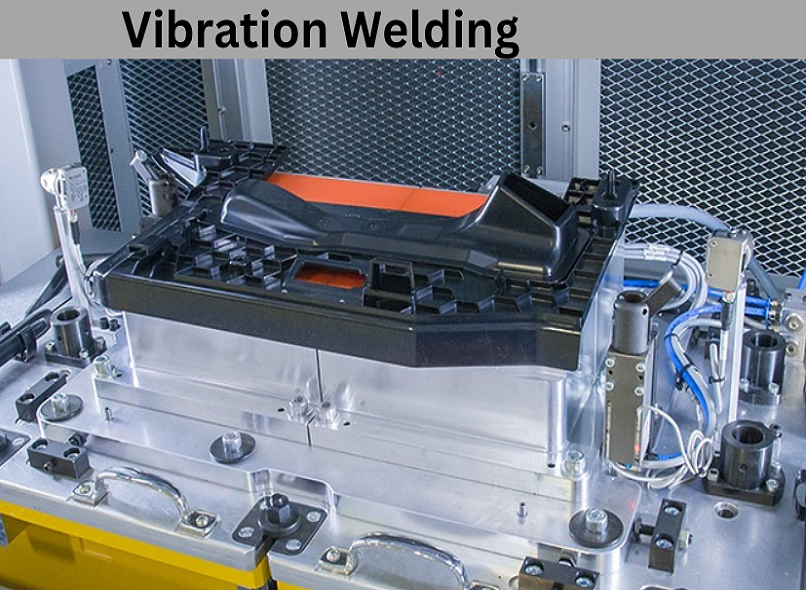What are the four methods of vibration welding?

The four methods of vibration welding include:
- Linear vibration welding: In this method, the parts to be joined are oscillated linearly along a single axis. This is commonly used for joining large and complex parts. Linear vibration welding offers several advantages, such as high welding speeds, excellent tensile strength, and the ability to weld parts with irregular shapes. It is often used in industries like automotive, aerospace, and consumer goods. The process begins with the preparation of the surfaces to be joined, ensuring that they are clean and free from contaminants. Then, the parts are brought together under pressure, and one part is oscillated back and forth while the other remains stationary. The frictional heat generated by the oscillation softens the thermoplastic material, allowing for fusion and the creation of a strong bond. Linear vibration welding is known for its reliability and efficiency, making it a preferred choice in many industries.
- Orbital vibration welding: Orbital vibration welding involves oscillating the parts in a circular or orbital motion. This method is suitable for joining small to medium-sized parts with complex geometries. Orbital vibration welding provides precise control over the welding process, resulting in consistent and uniform welds. It is commonly used in industries such as electronics, medical devices, and packaging. The process starts with the preparation of the surfaces, similar to linear vibration welding. The parts are then brought together and subjected to pressure while one part orbits around the other in a circular motion. This motion generates frictional heat, causing the material to soften and fuse together. Orbital vibration welding offers advantages like improved aesthetics, reduced cycle time, and the ability to join dissimilar materials.
- Ultrasonic vibration welding: Ultrasonic vibration welding utilizes high-frequency vibrations to generate heat and create a strong bond between parts. In this method, the parts are held together under pressure while ultrasonic vibrations are applied. The vibrations cause frictional heat, melting the thermoplastic materials and allowing them to fuse together. Ultrasonic vibration welding is particularly effective for joining small and delicate parts, such as electronic components, medical devices, and toys. It offers advantages like precise control over the welding process, minimal part deformation, and the ability to join dissimilar materials. Ultrasonic vibration welding starts with the preparation of the surfaces, followed by bringing the parts together and applying pressure. Then, ultrasonic vibrations are introduced, which create localized heating and fusion of the material.
- Radial vibration welding: Radial vibration welding involves the oscillation of one part in a radial direction relative to the other part. This method is commonly used for joining cylindrical or tubular parts, such as pipes or containers. Radial vibration welding offers advantages like high welding speeds, excellent weld strength, and the ability to join parts with varying diameters. It is widely used in industries like automotive, plumbing, and industrial manufacturing. The process begins with the preparation of the surfaces and the assembly of the parts. One part is then vibrated radially while the other remains stationary, generating frictional heat and facilitating material fusion. Radial vibration welding is known for its efficiency, reliability, and ability to produce strong and uniform welds.
These four methods of vibration welding offer different advantages and are chosen based on the specific requirements of the application. The selection of the appropriate method depends on factors such as the size and shape of the parts, the desired weld strength, production volume, and cost considerations. It is important to carefully evaluate these factors to ensure a successful and reliable weld. Additionally, advancements in technology and materials may lead to the development of new vibration welding methods in the future, further expanding the possibilities of this joining process.
In conclusion, vibration welding is a versatile and efficient joining process for thermoplastic materials. The four methods - linear vibration welding, orbital vibration welding, ultrasonic vibration welding, and radial vibration welding - provide options for joining a wide range of parts with different sizes, shapes, and complexities. By harnessing frictional heat generated through oscillation, these techniques create strong and reliable bonds. The choice of the vibration welding method depends on the specific application requirements, and it is crucial to consider factors like part characteristics, production volume, and cost-effectiveness. With the right method and optimization, vibration welding can significantly contribute to the manufacturing of high-quality and durable products. As technology continues to advance, it is important to stay updated on the latest advancements and techniques in vibration welding to ensure the best possible results in joining thermoplastic materials.





